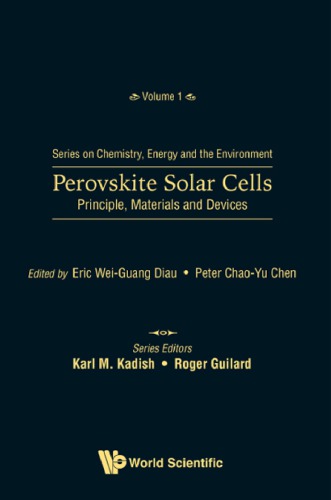

Most ebook files are in PDF format, so you can easily read them using various software such as Foxit Reader or directly on the Google Chrome browser.
Some ebook files are released by publishers in other formats such as .awz, .mobi, .epub, .fb2, etc. You may need to install specific software to read these formats on mobile/PC, such as Calibre.
Please read the tutorial at this link: https://ebookbell.com/faq
We offer FREE conversion to the popular formats you request; however, this may take some time. Therefore, right after payment, please email us, and we will try to provide the service as quickly as possible.
For some exceptional file formats or broken links (if any), please refrain from opening any disputes. Instead, email us first, and we will try to assist within a maximum of 6 hours.
EbookBell Team

0.0
0 reviews Solar energy is an unlimited, clean, and renewable energy source, which can be considered to replace the energy supply of fossil fuel. The silicon solar cell is one of the dominant photovoltaic technologies currently, which converting sunlight directly into electric power with around 20% efficiency. This technique was been widely used in mainstream solar energy applications for decades, though the relatively energy-demanding production process remained with challenges to be resolved.
Recently, emerging photovoltaic technologies such as organometal halide hybrid perovskite solar cell has attracted tremendous attention due to their promising power conversion efficiencies (over 22%) and ease of fabrication. Their progress roadmap is unprecedented in photovoltaic history from the material development and efficiency advancement perspective. Beyond the rapid progress achieved in the last few years, it is expected that this novel technology would make an impact on the future solar cell market providing long-term stability and Pb content issues are addressed. These challenges rely on a better understanding of materials and device function principles. The scope of this book is to provide a collection on the recent investigations from fundamental process, materials development to device optimization for perovskite solar cells.
Readership: Graduate students and researchers in chemistry, materials science and photovoltaics.